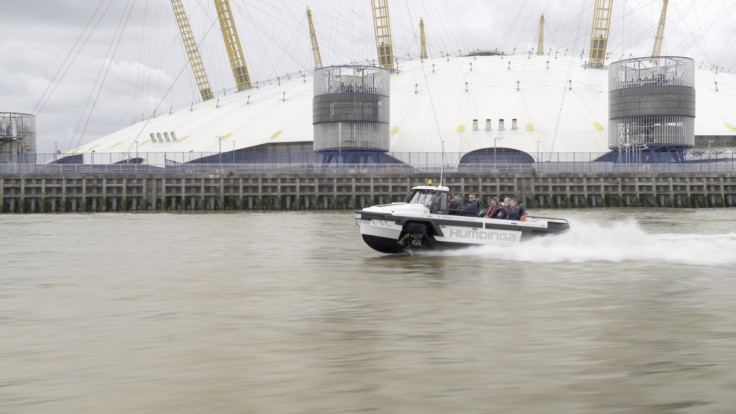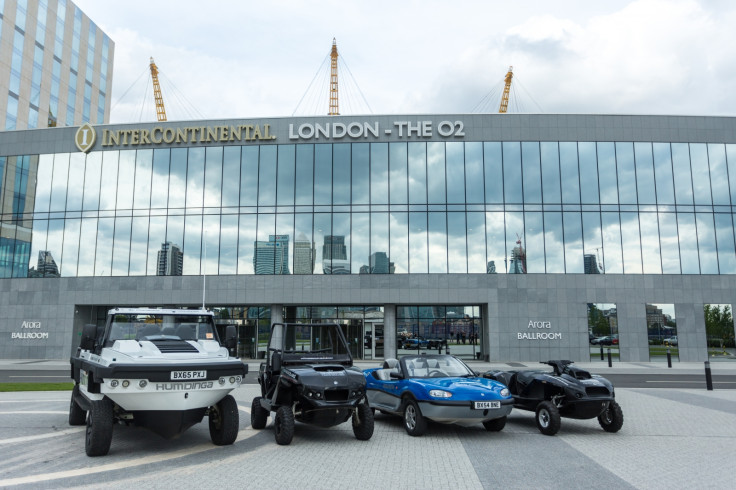World's first high-speed amphibious taxi service could revolutionise London's public transport
The world's first amphibious taxi service could be set to hit London's highways and waterways as state-of-the-art vehicles took to the Thames to show how they can offer another option for public transportation.
Amphibian vehicle experts Gibbs Technologies demonstrated its high-speed amphibian (HSA) fleet in front of taxi company executives and potential licensees in London in a bid to showcase how road-to-water cabs could revolutionise the capital's transportation scene.
An open-top, four-wheel-drive vehicle called the Humdinga was presented as the best application for a viable taxi option. Able to carry up to nine passengers it drove from the roads around North Greenwich straight into the choppy waters of the Thames where it transformed in five seconds into a sea-faring vessel capable of hitting 30mph. From there it took passengers down the Thames at speed, seemlessly returning to dry land up a designated ramp where it continued its journey on the road.
Not many cities in the world benefit from having a river cutting through it but London is an ideal set-up to offer an alternative option to congested roads and packed public transport by taking to the water highway. A high-speed amphibious vehicle would not only be a useful option for taxis but also emergency services, which could offer rapid response for bypassing city traffic.

"We are delighted to have had the opportunity to show our vehicles here as it really does allow us to demonstrate the technology in all of our vehicles and shows their value to potential licensees," said Neil Jenkins, CEO of Gibbs Technologies. "We are very excited to be in talks with a number of potential licensees worldwide, but particularly, businesses in the UK with a view to developing the first-ever high-speed amphibian river taxi which could truly revolutionise transport in London," he added.
London already offers public transportation on the Thames in the form of its Thames Clipper boat services, however these are an interval service rather than a hail-and-ride offering. They also only depart from certain points along the Thames and are not as fast as the Humdinga demonstrated by Gibbs. The amphibious vehicle also has the advantage of being able to drive back onto dry land to reach the customer's destination, meaning in theory they could reach almost any destination in London via a combination of road and water.

As well as the Humdinga, Gibbs Technologies also showed off other HSA vehicles including a quad bike called the Quadski as well as an off-road buggy called the Terraquad. Its sports car has been around for a few years now.
With Uber looking at the possibility of rolling out self-driving taxis could we also be seeing an Uber Amphibian popping up on our smartphone app in the future? It is a tantalising thought and certainly something customers would not say no to – especially those who get caught up in the chaos of train delays and strikes. The question is whether the likes of Uber, Addison Lee or TfL were to jump on-board the amphibious route how much a ride would cost. At least, if none of the above are interested maybe they might want to stop off at Vauxhall and knock on the door of James Bond's MI5.
© Copyright IBTimes 2025. All rights reserved.






















